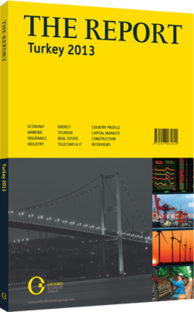OBG talks to Sani Şener, President & Group CEO, TAV Airports

Interview: Sani Şener
What are the government’s goals for the aviation sector in Turkey over the next decade, and what is the likelihood of these objectives being achieved?
SANI ŞENER: Throughout the 2000s, Turkey’s aviation business performed strongly. Three main factors contributed to this success: outward foreign economic policy, political stability and the successful privatisation of transportation networks. As a result, Turkish companies strengthened their position in the domestic market and established partnerships with international firms, leading to major improvements in airport infrastructure and services. But Turkey cannot rest on its laurels; the 2023 goals set by the government aim to tackle remaining challenges and make Turkey a major hub for air transport. The new development strategy will feature unprecedented investments in infrastructure ($170bn), energy ($130bn) and tourism ($25bn). I expect these measures to have a considerably positive impact on the aviation sector. Now, there are 123m passengers transiting through Turkish airports, compared to 33m a decade ago. However, Turkey has the potential to achieve over 190m passengers by 2023. The construction of a third airport in Istanbul will no doubt contribute to this, but expectations for passenger numbers to reach 150m in the short term are unrealistic.
How can the aviation industry contribute to developing an international culture in Turkey?
ŞENER: Turkey has become a key player in Europe and the Middle East and attracted investors from around the world. However, Turkey cannot become a global power unless its companies become truly global. For Turkish companies to effectively compete internationally, it is essential to establish partnerships with foreign firms. Aviation companies have set an example in this regard; for instance, TAV’s partnership with Aéroports de Paris is helping to build a global airport platform, although operationally we are still focused on neighbouring countries because of cultural and historical ties. In turn, as aviation companies start operating abroad, they create incentives for other Turkish companies to do business in different parts of the world. With that ripple effect in mind, greater emphasis must be placed on teaching foreign languages and cultures to children while they are very young. Additionally, Turkish companies must also make further efforts to attract and employ workers from other countries to facilitate international linkages and innovative strategies.
To what extent has recent political unrest in the MENA region affected Turkey’s aviation sector?
ŞENER: A negative impact has certainly been felt by aviation companies with activities in countries such as Tunisia, Libya and Syria, where passenger numbers have declined significantly in recent years. However, at the same time, political instability in the region has also reinforced Turkey’s status as a safe destination in the region for both tourism and business.
Recovery from external shocks is very quick in the airport business. In the past decade, Turkey has experienced a series of events that had a negative impact on the sector, ranging from earthquakes and conflicts in neighbouring countries to the spread of global diseases. Nevertheless, airport activity continued to rise at an exceptionally fast pace throughout the same period. In an increasingly globalised world, everyone must fly and the growth potential of the aviation sector, particularly in emerging markets, is very high.
What will be the main challenges facing Turkey’s transport sector in the upcoming years?
ŞENER: The success of the aviation sector is a direct reflection of the performance of the economy as a whole. The main challenge now is to develop into an innovation-driven economy and escape the “middle-income trap.” Growing from very low income levels is easy, but catching up with high-income countries is another story. Besides improvements to infrastructure, Turkey must foster a more competitive economic environment that is conducive to innovation.
You have reached the limit of premium articles you can view for free.
Choose from the options below to purchase print or digital editions of our Reports. You can also purchase a website subscription giving you unlimited access to all of our Reports online for 12 months.
If you have already purchased this Report or have a website subscription, please login to continue.

